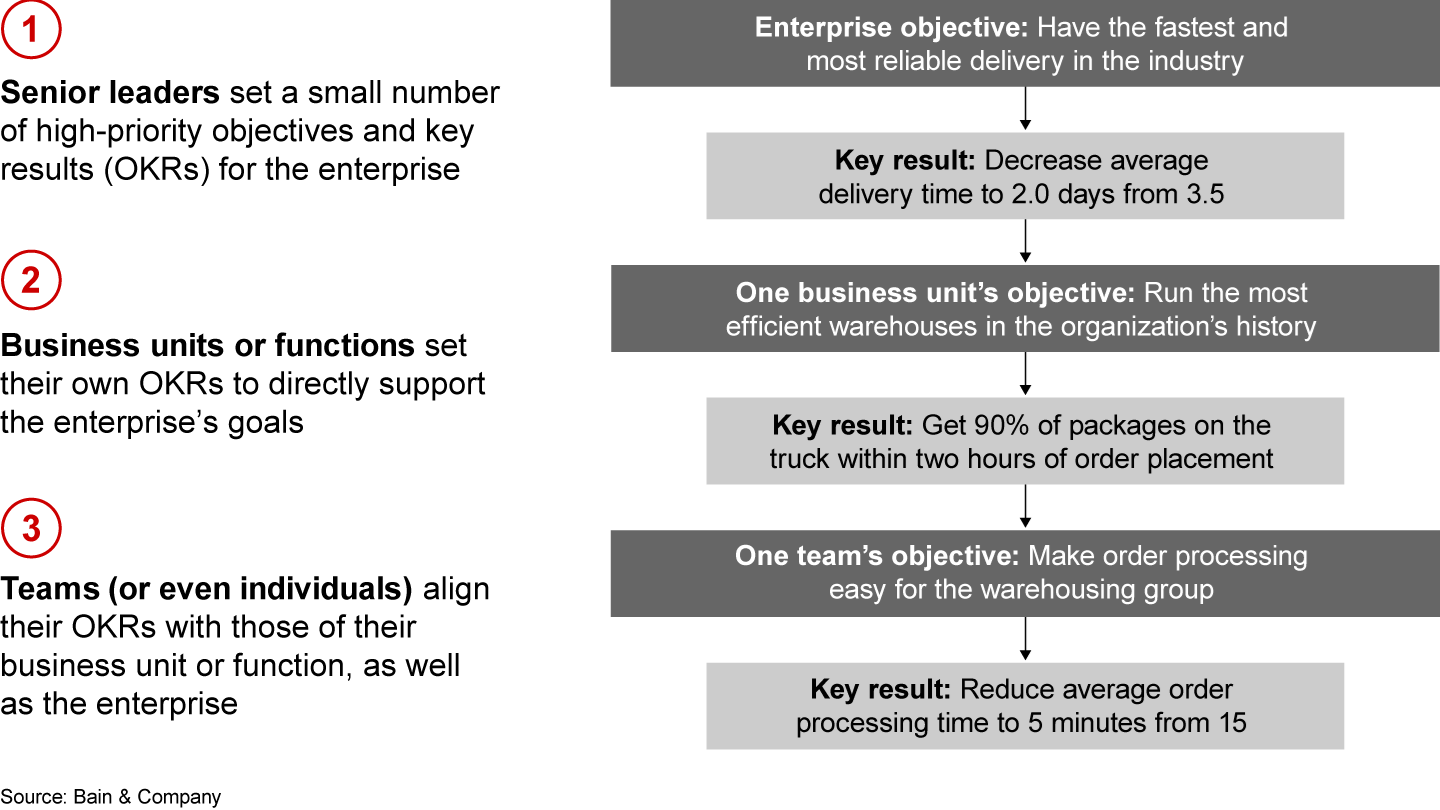Brief

Auf einen Blick
- Automation and artificial intelligence are changing the economics of work, leading executives to think differently about the possible value that each employee contributes.
- When implemented correctly, automation does much more than improve efficiency; it augments the workforce, allowing people to focus on creativity, problem solving, and interpersonal interactions.
- Successful automation programs depend on the support of the workforce, including contributors who can describe how processes can be improved and creators who learn how to build simple automations that improve processes.
Efficiency is often the foot in the door for automation, but the real value of automation lies far beyond the traditional efficiency plays. Done right, automation enables employees to focus on truly human, high-value activities, creating what we call the augmented workforce.
In our report The Working Future we highlighted the corporate shift toward focusing people on problem solving, creativity, and interpersonal connections—activities that are more variable in nature and more reliant on higher human faculties. Increasingly, employees will be able to enhance their performance in these higher-value domains with AI-powered virtual assistants, such as those demonstrated recently by OpenAI, while eliminating repetitive tasks using automation. We expect this augmented way of working to be very attractive to companies and their employees.

Better Together: OpenAI and Bain Form an Alliance
Harness the power of generative AI to transform your business
Automation is still underappreciated and underutilized in most companies today. But the coming changes are inevitable, and they follow a model seen before in technology adoption. Just as high-speed data networks altered the nature of outsourcing and the way that companies organized work, the advent of automation and artificial intelligence will change the economics of how work gets done. Automation and the rise of the augmented workforce should lead executives to think differently about the value of their employees and the value those employees can contribute. Ideally, these changes will not follow a “lift and shift” model, where an existing process or function is automated. A more proactive approach would be for companies to disentangle the high-value cognitive work (specifically, problem solving, creativity, and interpersonal connections) from the low-value work of information processing and physical labor.
Across surveyed industries, workforce augmentation has led to a 21% to 30% reduction in costs.
Focusing on higher-value work
The challenges for enterprises developing an augmented workforce will not be technological but rather determining how to transition workers from lower-skill roles to the jobs of the future. Companies will need to provide the right training and support, encourage and reward workers to embrace change, and distribute the benefits of this transformation, not only to shareholders and customers but also to the employees whose roles are evolving. Our research has found that many employees want to use automation. Letting them do so will increase personal job satisfaction while also improving customer experience and delivering better outcomes for shareholders. How can business leaders help workers develop these capabilities?
Instead of focusing on replacing people, companies position themselves better for success when they apply technology to augment the human workforce—providing better information, insights, and focus for the tasks that we still want people to perform. In each of the three areas where we see humans making their greatest contributions, workers can benefit from intelligent automation.
- Problem solving. Companies can support workers with training in strategies that include establishing perspective, disaggregating problems, framing solutions, and deploying analogical reasoning—all of which can greatly improve decision making at work.
- Creativity. Everyday creativity required for success in the jobs of the future can be taught by introducing workers to the right techniques. Provide employees with tools that make it easier and faster to prototype and test ideas.
- Interpersonal communication. Empathy, introspection, and behavioral adaptation will be increasingly important. Equip employees with insights about the people they are interacting with and provide coaching on how best to engage them.
Leading firms will develop internal communities of expertise, while automating or outsourcing tasks that do not require as much problem solving, creativity, or interpersonal skills. Our research finds that top-performing companies allocate more than 90% of their top talent to these mission-critical roles, while other companies allocate only 20% of their top talent to these roles. In this new model, employers must rebalance their investments in talent strategy and place greater value on the workforce.
Four roles in the augmented workforce
Most companies have years or decades of habits to overcome as they learn new ways to work. A concerted effort is necessary to redesign processes, encourage participation, and reimagine how work gets done.
Even so, most companies do not achieve all their transformation objectives right away, whether measured by cost reduction, growth opportunities, or improved Net Promoter Score℠. Bain’s research into hundreds of initiatives found that only 12% of companies achieved their desired results. One of the biggest hurdles is getting workers to change their habits, and that takes communication, support, and incentives.
When companies adopt large-scale automation initiatives, we see employees take on one or more of these four roles: contributors, creators, coordinators, and consumers. Understanding these roles and how they support the change to greater automation can help executives ensure a more successful transformation.
- Contributors. The employees who are closest to a process are the ones who can usually describe how it can be improved. Successful transformations reward these people with incentives, support, and recognition. Because work might cross silos, these contributors may not know the root cause of problems, but they can point to symptoms, which can help process specialists map out the end-to-end improvement opportunities.
- Creators. Creators are like “citizen developers” who can build simple automations that improve processes. Think of Excel macros: A few people in every department always know more about how to make and use macros, and they often become a resource for others. With support, training, and good governance, they can take on more complex tasks and become an important part of a transformation program.
- Coordinators. These specialists provide tools, education, support, and ongoing monitoring for everyone whose job is touched by new automation. Regulatory changes, strategy shifts, market conditions, and technology upgrades all create the need for ongoing maintenance, learning, and process improvement.
- Consumers. Almost all employees are in this group, since automation touches nearly every role in one of two ways: Scheduled automation provides information and insights to support good decision making, and on-demand automation triggers employee action. In both cases, the goal is to develop a system where automation manages the rote, repetitive, and rules-based aspects of the job, freeing the employee to do work that adds real value.
Scaling a successful automation program
Companies successfully transitioning to an augmented workforce typically get two important activities right: aligning the business and technology on a plan to create new value—both for the company and for employees—and ensuring they have the right tools and programs for enabling workers.
A plan for creating value. Aligning automation goals with company strategy is the first step in developing a plan for creating value. Leading companies make a realistic assessment of the pace and potential value of implementing automation, and then they establish metrics at every level of the company to measure progress.
Engaging frontline workers in the transformation and providing opportunities to contribute can help change the culture and bring the whole organization along on the change journey (see Figure 1).
Deploying automation to reduce delivery time touches multiple levels of the company


In this example, leaders set a goal to reduce average delivery time from 3.5 days to 2 days. Business unit and function leaders who own parts of the process are contributors and provide suggestions. Individual creators build their own automations, eliminating some tasks under their own control. For instance, automating the validation that an item is in stock could shave 10 minutes off the order processing time. Coordinators look over the entire process and decide where to invest in professional developers. In the end, every employee who touches the process becomes an automation consumer.
A detailed analysis at the start of the transformation helps set specific goals. The plan has at least three levels of detail: the size and shape of the target outcome, a prioritized list of initiatives with timing, and descriptions of how progress is measured. While productivity and cost are always important, automation initiatives should also try to deliver benefits for each category of stakeholder: customer and worker experience, risk mitigation, and career opportunities and rewards.
Enabling workers. Automation is a rapidly evolving field, and that adds to the difficulty of choosing the right technologies and vendors to support the transformation. Finding a partner with a long-term platform strategy is a foundational step, but do not let that keep you from using best-in-class products from other vendors if they solve specific work automation problems.
Just as important is supporting employees with an interest in building automations. Having a platform that supports codevelopment with professional developers allows these citizen developers to build up new skills that allow them to automate processes. Identifying these employees is key to the initiative’s success. However, as these employees' skills improve, they might be targeted for recruitment by companies that appreciate their potential.
Further, companies need to be thoughtful and support their employees’ adjustments as they move to and engage in a richer, higher-value work environment for a greater percentage of their time.
Where to start
When setting automation goals, it’s important to aim high, while also balancing business aspirations with the amount of change and time it will take to fully implement automation. Some automation, such as introducing bots, can be implemented relatively quickly and inexpensively, whereas core business process changes typically require more time and greater investments. In our experience, programs are more successful when they start with the easier moves first. These investments see returns within a year and allow a company to build their capabilities and reduce risk.
Companies should begin by prioritizing a few high-impact initial use cases to help the organization see the value of automation. Once a stable set of tools and processes have been established, companies can reach out to workers interested in using citizen development tools. Some companies have had success by starting with workers who are already using other simple technical tools, like Excel macros, Microsoft Access or similar databases, Tableau and other data analytics platforms.
Education should include guidance on how to model and simplify business processes in addition to technical assistance on how to use citizen developer tools. Frameworks such as Six Sigma or Define Measure Analyze Improve Control (DMAIC) can be useful to adopt even when considering simple automation opportunities. And creating a recognition and reward model, with communications to the rest of the organization, will help to expand the implementation beyond the early adopters. Some companies have even used the same language of Six Sigma—“white, yellow, green, black belt” rankings—to indicate proficiency with automation tools and practices.
Although the future augmented workforce model is enabled by technology, companies should recognize that a successful shift to this approach is fundamentally about culture change and people development. Done right, workers will feel excited and empowered to be a part of shaping the jobs of the future.

Net Promoter System℠
Konzentrieren Sie sich darauf, die leidenschaftliche Loyalität der Kunden zu gewinnen und gleichzeitig die Energie, den Enthusiasmus und die Kreativität der Mitarbeiter zu inspirieren, um profitables, nachhaltiges organisches Wachstum zu beschleunigen.